|
People
go to cemeteries to
build private altars, containing the favorite foods and beverages, as
well as photos and memorabilia, of the departed. During the two-day period, families usually clean
and decorate graves; most visit the cemeteries where their loved ones
are buried and decorate their graves with ofrendas (offerings), which
often include orange marigolds
|
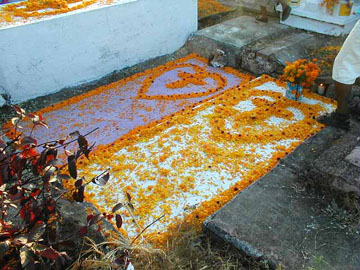
|
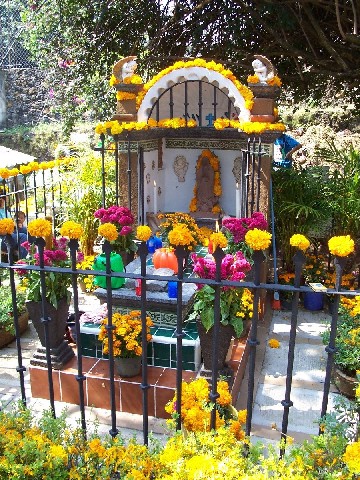
|
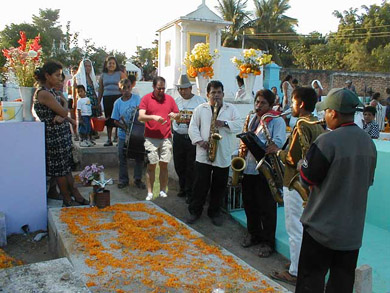 |
|
Some
families build altars or small shrines in their homes; these usually
have the Christian cross, statues or pictures of the Blessed Virgin
Mary, pictures of deceased relatives and other persons, scores of
candles and an ofrenda. Traditionally, families spend some time around
the altar, praying and telling anecdotes about the deceased.
|
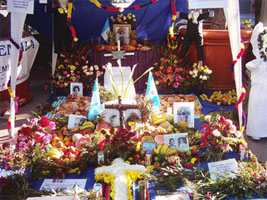
|
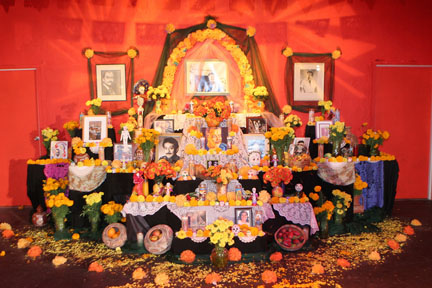
|
|
A common symbol of the
holiday is the skull (colloquially called calavera), which celebrants
represent in masks, called calacas (colloquial term for "skeleton"),
and foods such as sugar or chocolate skulls, which are inscribed with
the name of the recipient on the forehead.
|
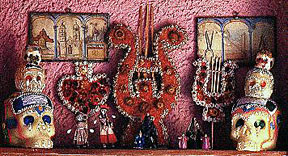 |
|








